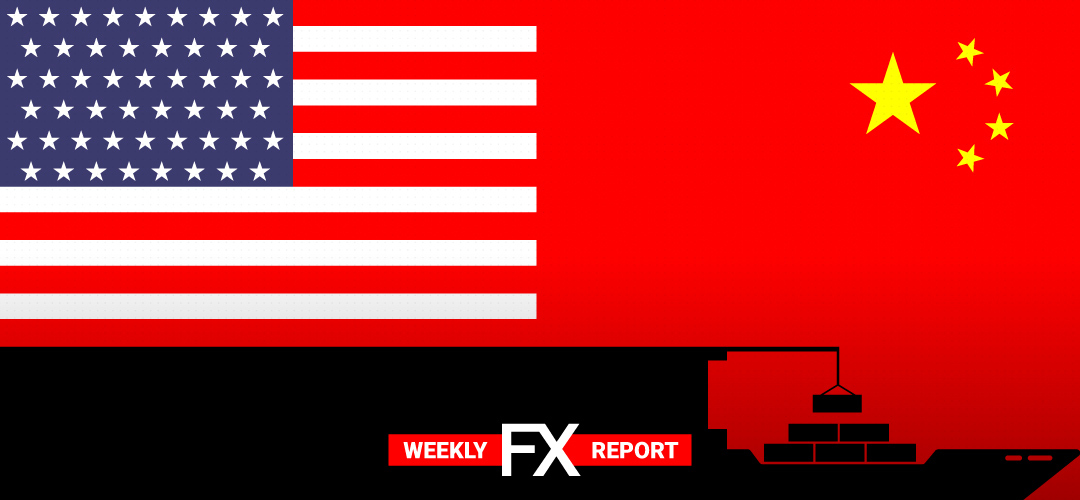Market sentiment soured following the adjournment of the U.S.-China Phase 1 trade deal review, initially scheduled for Saturday, leaving the deal intact.
Investors were relieved for this delay as last week a clutch of data pointed to a precarious recovery for the world’s biggest economy.
However, U.S. President Trump said on Saturday he could exert pressure on more Chinese companies. The Trump administration banned TikTok earlier in the month and announced on Monday it will further tighten restrictions on Huawei.
Hopes for additional stimulus to combat the pandemic faded on Friday. The Senate and House of Representatives are in recess and no fresh talks scheduled with U.S. President Donald Trump’s negotiators.
U.S. politics as a presidential election looms are also under the spotlight. The election season kicks into higher gear with the Democratic National Convention, which runs Monday through Thursday. The Republican convention will be held from Aug. 24 to Aug. 27. They both will be mostly virtual this year due to the COVID-19 pandemic.
Asian data releases on Monday were more than gloomy. Japan was hit by its biggest economic contraction on record.
U.S. job growth for July helped ease some investor worries on the U.S. labour market. The U.S. Jobs report showed nonfarm payrolls increased by 1.76 million, much lower than the record 4.8 million in June.
New Zealand delayed a general election by a month on Monday as it grapples with a new outbreak of the coronavirus in Auckland.
Brexit trade talks will restart on Tuesday. The issue of whether London’s financial sector will be able to access the European Union’s market after Brexit is in focus.
LQDFXperts – Trade Deal Review adjournment relieved investors
The dollar fell for the eight-straight week. Investors looked to other currencies whose economies outperform that of the United States in terms of managing the coronavirus pandemic. The delay in the passage of additional U.S. stimulus for virus relief did not help the dollar’s cause as well. The eight weeks in a row of losses was the worst losing streak since June 2010. After losing 10% of its value from a peak in March, the dollar has been bouncing around its lowest levels in more than two years since late July. EUR/USD showed small gains last week and recorded a weekly close above the 1.18 level for the first time since January 2018.
GBP/USD was almost unchanged for a second straight week. The pound managed to dodge a bullet, with Q2 GDP falling by over 20%. With both the UK and the US grappling with severe economic conditions due to Covid-19, the pair could remain calm next week.
The dollar had its best weekly percentage gain versus the yen in two months. Dollar/yen moved higher, as the pair enjoyed its strongest week since June. Both the US dollar and the Japanese yen are safe-haven assets. But investors have shown a surprising sentiment towards riskier currencies, despite the Covid-19 pandemic.
The Australian dollar ended the week on a flat note, as a sharp rise in Treasury yields steadied its U.S. counterpart after a run of losses. The Aussie has taken an extended pause after sparkling against the greenback. With some parts of Australia under lockdown due to Covid-19, investors may remain cautious towards AUD/USD.
The Canadian dollar strengthened last week, as USD/CAD dropped close to 1%. The US dollar continues to struggle, and Canada continues to show good numbers.
The week ahead – A bit of everything re data
This week will see the UK and the eurozone release consumer inflation data. Markets are also looking to the Fed minutes from last month’s meeting for any clues about an anticipated shift in the policy outlook. Britain releases inflation data on Wednesday and retail sales on Friday, with both expected to be lower.
- On Tuesday (18.08) investors are waiting for the RBA minutes providing details of the policy meeting held earlier this month. The bank’s rate statement warned that the economic outlook remains highly uncertain. A dovish tone from the minutes could weigh on the Aussie.
- On Wednesday (19.08) investors turn their attention to the Federal Reserve Policy Meeting Minutes. The Fed has been cautious, maintaining rates close to zero. If Fed policymakers sound bullish about the economy in the minutes, the US dollar could get a boost. Also, investors will keep an eye on the UK Inflation Report. Core consumer inflation improved from 1.2% to 1.4% in July, but it may probably slow to 1.3%.
- On Friday (21.08), investors may assess the full extent of the coronavirus pandemic on the UK economy. The UK Manufacturing PMI and the UK Services PMI will shed light on the economy as a new round of Brexit negotiations will restart on Tuesday.
Follow this week’s economic calendar.
PLEASE NOTE The information above is not investment advice.
Sources: Reuters, CNBC, BBC, The Guardian
